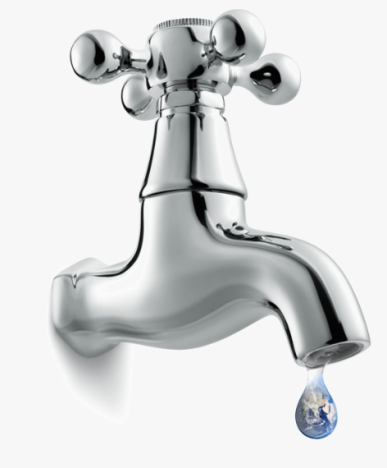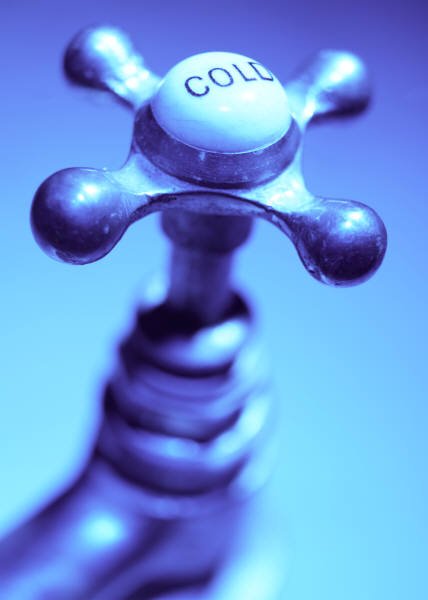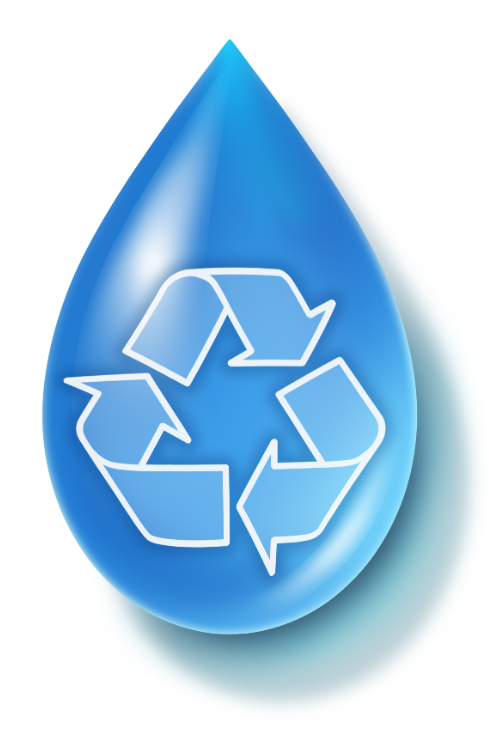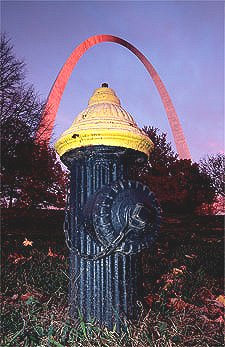City of St. Louis Water Division: Tips for Water Conservation
While St. Louisans currently do not have to worry about a water
shortage, it is important to remember that water is a limited
resource. There is the same amount of water on Earth today as there was 3 billion years ago,
and only 1% of Earth's water is available for human consumption. Making the effort to conserve water
now can help to avoid water shortages in the future.
Facts About Leaks

- A steady drip wastes one gallon every 15 minutes.
- A steady trickle wastes one gallon every 4 minutes.
- A steady stream wastes one gallon every minute.
- Dripping faucets and leaking toilets account for as much as 14% of all indoor water use, equivalent to 10 gallons per person of water lost per day.
Conservation Tips
- If you find that you have a leak, check all the faucets, outside spigots and toilets.
- Repair leaking faucets.
- Replace worn washers or valve seats.
Household Use

Toilet
- 40% of daily household water use
- Three to six gallons of water are used for each toilet flush
Bath and shower
- 32% of daily household water use
- 20 to 40 gallons of water are used for each bath or shower
Laundry
- 14% of daily household water use
- 30-35 gallons of water are used per cycle
Kitchen
- 11% of daily household water use
- 10 gallons of water are used to wash a sink full of dishes
- Dishwashers use as much as 25 gallons of water per cycle
Bathroom sink
- 3% of daily household water use
Indoor Water Conservation Tips
Toilets
- Flush only when necessary. Don't use the toilet to dispose of cigarette butts or other trash.
- Every toilet flush is equivalent to 80 glasses of drinking water.
- Repair leaks. To determine if your toilet is leaking, add food coloring to the toilet tank water, check the bowl in 15 minutes. If the water in the bowl is colored, you probably have a leak.
- Place a jug filled with water in your toilet tank. This displaces water, and consequently uses less water when the toilet is flushed.
- Replace an old toilet with a newer high efficiency model, which can save the typical household up to 20,000 gallons of water per year.
Bath and Shower
- Plug the drain before you run water for baths and ensure that the plug does not leak.
- Only fill the bathtub as much as you need. Keep showers short.
- Turn off water while soaping or shampooing.
- Install a low-flow showerhead.

Laundry
- Match the water level to the load size or wash only full loads.
- Presoak heavily soiled items. Use only as much detergent as needed.
- When in the market for a new machine, consider the newer high efficiency models that will use an average of 30% less water.
Dishwashing
- Install an aerator or flow restrictor in the faucet.
- Don't pre rinse.
- Soak pots and pans before washing.
- Don't keep the water running. Use only as much water as you need.
- Use only as much detergent as needed.
- Run the dishwasher only when it's full.
- Repair any leaky connections to your dishwasher.
Bathroom Sink
- Plug the drain and use only as much water as you need.
- Don't let water run when you brush your teeth.
- Install a low-flow faucet aerator in order to reduce water flow.
Outdoor Water Conservation Tips
- Up to 60% of household water is used outdoors
- Outdoor water use averages about 117 gallons per home per day
Pool
- Use a pool cover to reduce water loss due to normal evaporation.
- Repair any swimming pool leaks. Even a small leak represents a substantial waste.
- Manually clean your filter since this uses less water than the average backwash.
- When filling your pool, pay close attention to your water level. Overfilling wastes a lot of water.

Lawn and garden
- Water slowly in the morning or evening in order to reduce evaporation.
- Allow grass to grow taller in hot weather. The taller grass provides shade and reduces evaporation.
- Use mulch in the garden and shrubs to save moisture.
- Use native plants and shrubs that don't need a lot of water.
- Consider alternatives to big lawns.
Fire Hydrants
A fire hydrant is a source of water provided by most metropolitan communities
to enable firefighters to tap into the municipal water supply to assist in extinguishing a fire. Often, however,
vandals, or simply those seeking to play in the water, break them open using force. This is a dangerous and expensive activity.
Illegal use of Fire Hydrants:

- Endangers lives and property by lowering the water pressure needed to fight fires.
- Wastes millions of gallons of water, chemicals to treat water, and electricity to pump it.
- Causes higher water bills.
- Damages hydrants and water mains.
- Creates traffic hazards and accidents.
- Is punishable by up to one year in jail and a $500 fine.




